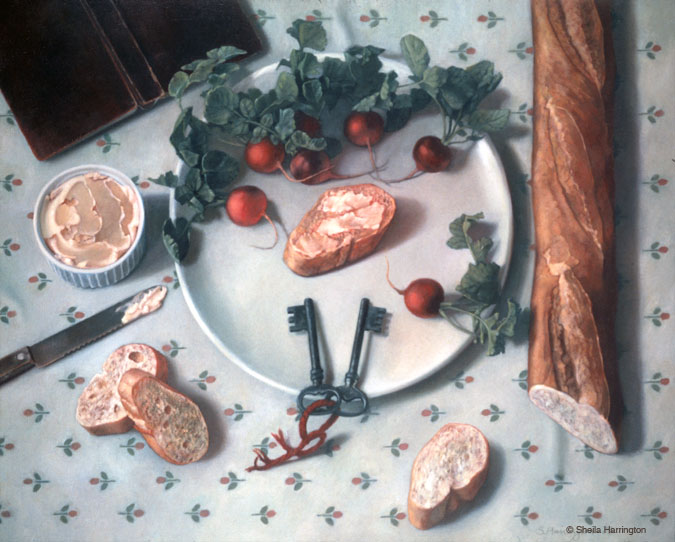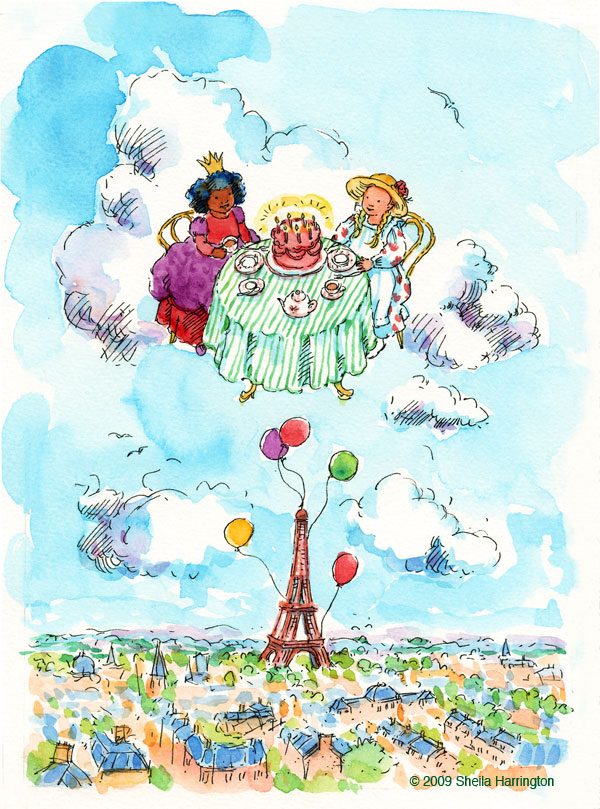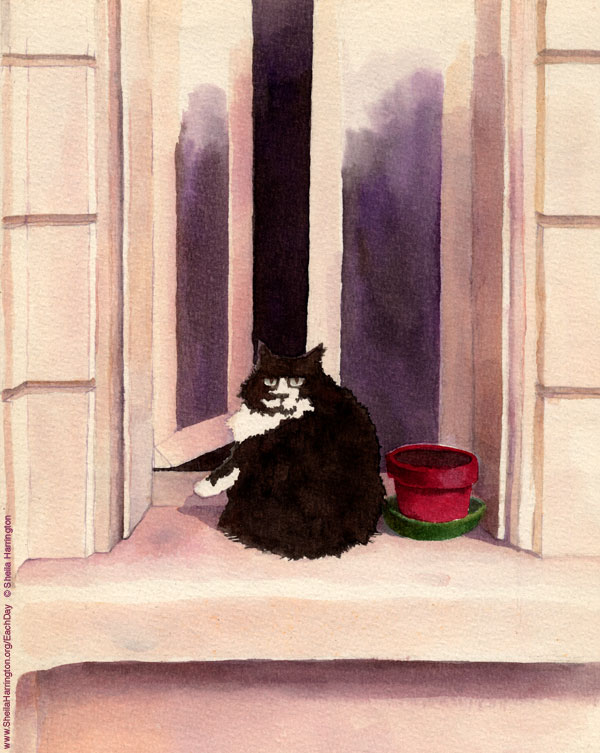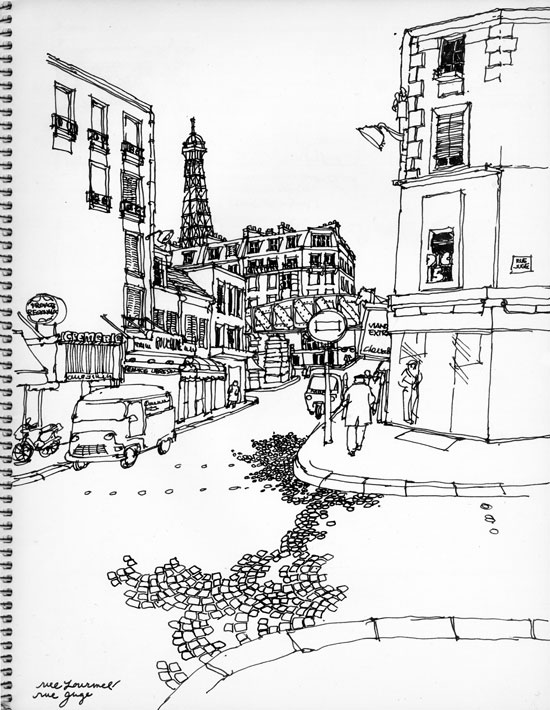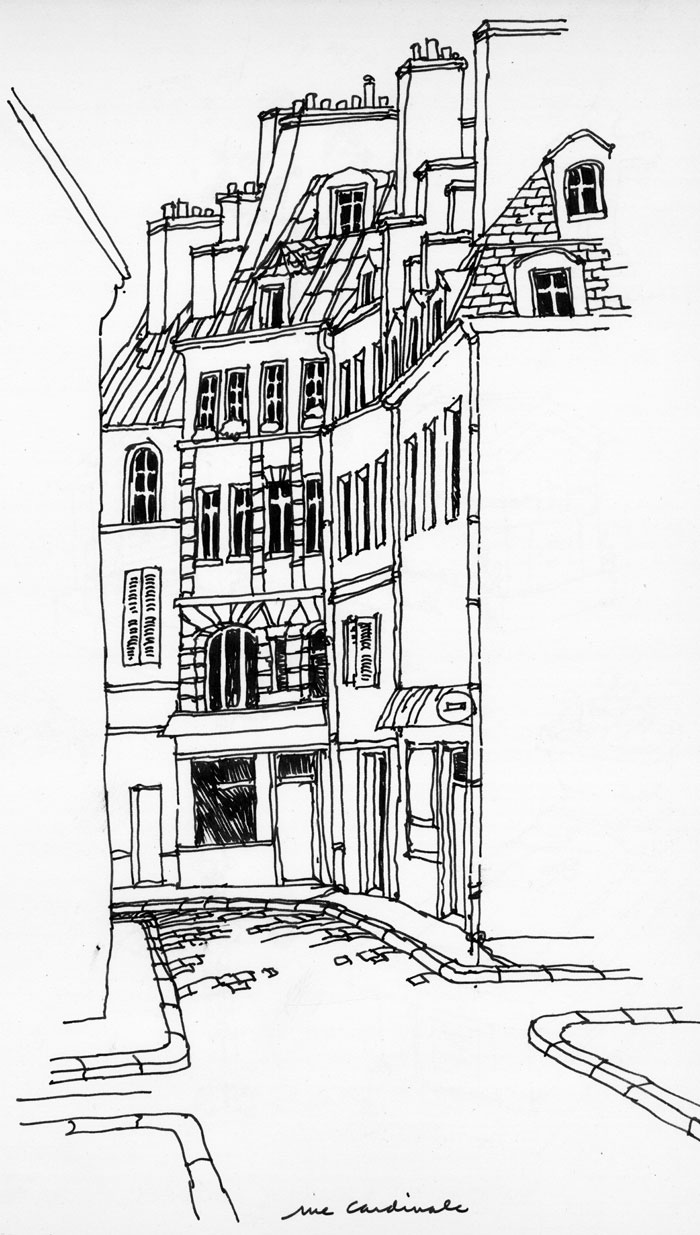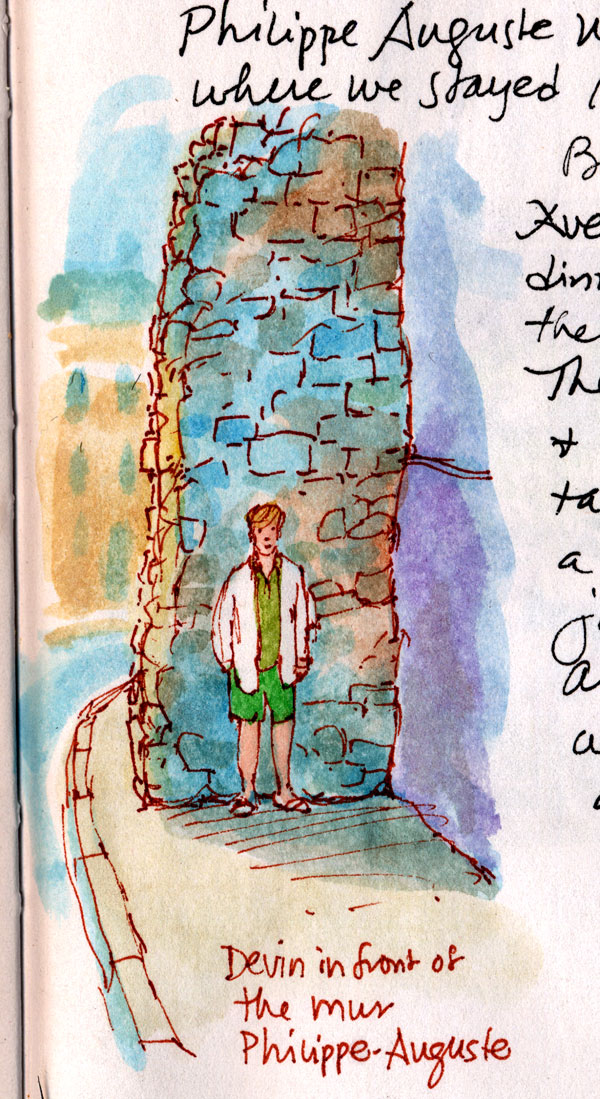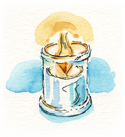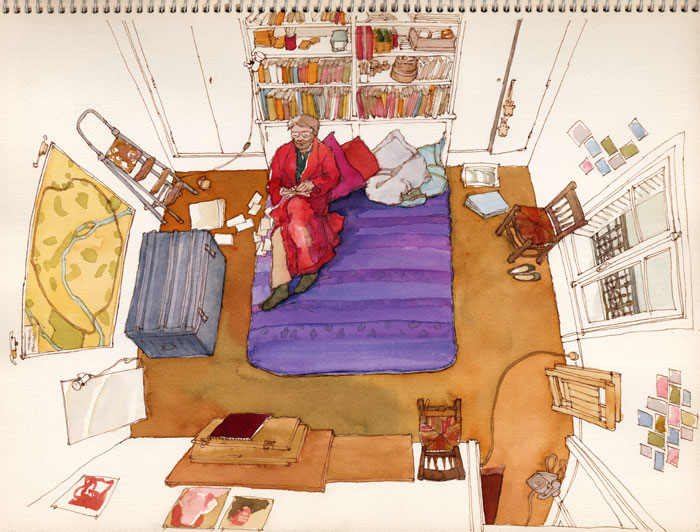
This rather yellowed sketch is from a previous lifetime when my husband and I were first married and living in Paris, drawing, painting, sculpting. Before children. Before we became rather yellowed ourselves. I chose this particular walk down la rue des souvenirs, when we were temporary expatriates, in honor of Sylvia Beach (1887-1962), whose birthday it is today.
Beach was born in Baltimore, Maryland, and was actually christened Nancy, but she later changed it to a name she chose herself. There were generations of clergy and missionaries on both sides of her family, but Beach chose literary passion and Francophilia over religious fervor. Definitely similarities there though.
Perhaps she became a Francophile during her father’s assignment to the American Church in Paris when she was fourteen, because she returned to Paris later to pursue studies in French literature, and stayed for the rest of her life. Her research led her to a meeting, collaboration, and romance with Adrienne Monnier, who had in 1915 opened a bookshop-cum-lending library specializing in French translations of modern works. By 1921 Beach’s own shop, Shakespeare and Company, was installed across the street at 12, rue de l’Odéon, in the Latin Quarter, offering classical and modern literature and periodicals in English and English translations.
Shakespeare and Company quickly became one of the centers of the Paris literary world, with authors, poets, and readers wandering back and forth across the street between the two complementary shops (imagine!) to engage in discussion, exchange news, and borrow money (struggling writers being ever short-handed). But she was far more than a seller of books. Kind, cheerful, enthusiastic, and generous as well as learned, she took it upon herself to help aspiring writers succeed, introducing them to one another and to helpful contacts, taking them round to visit Gertrude Stein’s salon of poets and artists, organizing readings to bring their works before the public. She helped James Joyce and Henry Miller find publishers for their work, which was banned and unprintable in their native countries.
When the Germans invaded Paris in 1939, Beach was forced to close her shop and spent six months in an internment camp, afterwards hiding out with a friend (she was after all an enemy American) until the war’s end. The shop never reopened after the war, but a new version was launched in 1951 under the same name, with Beach’s permission, on rue de la Bûcherie (about which more in a later post).
Pretend you are a young, aspiring American writer on your first visit to Paris. Back on the farm they think you’re crazy. You wander into Shakespeare and Company and encounter Ernest Hemingway… F. Scott Fitzgerald… Ezra Pound. Miss Beach ropes you in to help edit press proofs. In the afternoon she takes you to the Steins’ to see the new work of Pablo Picasso and Henri Matisse and in the evening to admire Josephine Baker dancing at the Théatre des Champs-Elysées. Paris in the 1920s was a refuge from Puritanism, Prohibition, and Prejudice, and Sylvia Beach did her part to make it so. Happy Birthday, Patron Saint of the Independent Booksellers.
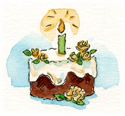 Kara
Kara

